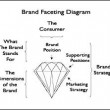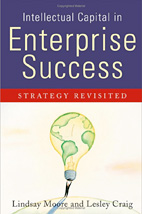Patents, trademarks, copyrights and other intangibles are not worth anything if they sit in isolation. It requires individuals with vision and ability to understand their potential and to turn this into meaningful return by putting in place programmes that will maximise their value.
The Ethics of Intellectual Asset Management (PDF)
The shift from the familiar corporate asset base centered upon traditional physical and financial asset to an asset base centered upon intangible intellectual assets brings with it subtle new ethical challenges and problems.
Brand Valuation Basics
Since the late 1990s, the need to establish dollar valuations for Intellectual Capital Assets has driven the development of a handful of brand valuation methods. Essentially, there are four approaches to valuing a Brand, and one or more of them may be applicable in any individual instance.
Brand equity critical in firms’ valuation (PDF)
With the dawn of the Age of Intellectual Capital, during the mid ’90s, came the realization that the real wealth in the modern enterprise is located in the intangible assets of that enterprise—as opposed to the “traditional (tangible) assets” such as real estate, plant, equipment, inventory, cash and the like.
Patents Can Protect Formulations and Processes (PDF)
Many manufacturers overlook the opportunity to patent aspects of their food products or specialised manufacturing processes. This is especially true in the natural products industries, where unusual ingredients are often mixed together and specialised production processes are increasingly required to make successful products. In most natural product categories, it takes substantial innovation for manufacturers to be able to produce successful functional and natural food products.
Reverse Engineering for Competitive Advantage (PDF)
Reverse engineering competitors’ formulations is legal, can be ethical and can benefit a company’s strategic position in the marketplace – if it is pursued in the right way. As such, reverse engineering is a powerful product-development tool that can be used to trump even patent-protected formulations or proprietary compounds, thus enhancing a company’s place in the marketplace.
Brand Faceting and Marketing Strategy
Managing the growth and change of a Brand has always been difficult, requiring both art and wisdom. Most Brands are either over-managed and not allowed to change, or not managed at all and allowed to drift or even languish without strategic guidance or direction. The real art is to manage your Brand in such a way as to respect its natural expression. There is an art to it.
Building Market Capitalization With Intellectual Capital Assets
For every dollar of value contributed by tangible assets, two to four dollars more are being contributed to enterprise value by the intangibles. How can we make intangible assets, known as Intellectual Capital, actionable so we can use them to drive corporate valuation and stock price? Here is a simple way to think about the subject…
Why Do We Need a Brand Strategy?
With the dawn, during the mid 1990s, of the Age of Intellectual Capital, came the realization that the real wealth in the modern enterprise is located in the intangible assets of that enterprise and not in the “traditional (tangible) assets” such as real estate, plant, equipment, inventory, cash, and the like.
It’s Time for Brands in Every Boardroom (PDF)
The brand has become a strategic business concern for every senior corporate executive and board member. With increased global competition, it has become essential for leaders in every industry sector, from commodities to consumers packaged goods, to understand the theory and practice of the successful deployment of brands.



 As the knowledge-based economy expands, the companies and individuals that possess intangible intellectual assets, such as intellectual property, will need specialized expertise, strategic thinking, legal experience, and the wisdom necessary to manage intellectual assets.
As the knowledge-based economy expands, the companies and individuals that possess intangible intellectual assets, such as intellectual property, will need specialized expertise, strategic thinking, legal experience, and the wisdom necessary to manage intellectual assets.